We bring you a comparison of the best music streaming services, explaining the main differences between Spotify, Tidal, Apple Music, Amazon Music, Qobuz, Deezer, and YouTube Music. These are the main services in the industry, and we are going to compare what each of their services has to offer.
We will try to make this comparison from a less technical point of view and closer to users who do not have to know the technicalities of music quality. We will also talk about the other extra features offered by each service, how each one tries to find its personality, and if they are compatible with Last.fm, which helps you to centralize your listening statistics.
At the end of the article, we will also draw some conclusions by looking at what each one offers and the type of users for whom each of the services can be recommended. And as we always say, we invite you to leave us your opinion and your experiences in the comments section, so that any undecided reader can also have your opinions.
Music streaming services: their features
| Amazon Music | Apple Music | Deezer | Qobuz | Spotify | Tidal | YouTube Music | |
|---|---|---|---|---|---|---|---|
| Catalog | 75 million + | 90 million+ | 73 million+ | 70 million+ | 82 million+ | 80 million+ | 80 million+ |
| Highest Quality Available | 16 bit and 44.1kHz 7 million at 24 bit and 192 kHz. | 24bit and 192kHz | 16bit 320kbps 16bit 44.1kHz 1411kbps on Deezer HiFi | 24bit and 192kHz | 320Kbps | 16 bits and 44.1 kHz in CD quality 24-Bit and 192 kHz in Master quality (24-Bit and 96 kHz are typical) | 256kbps |
| Personalized Recommendation | Yes | Yes | Yes | Yes | Yes | Yes | Yes |
| Offline Mode | Yes | Yes | Yes | Yes | Yes | Yes | Yes |
| Free Trial Period | One month | One month | One month | One month | One month | One month | One month |
| Free Mode | No | No | Yes | No | Yes | No | Yes |
| Main Supported Platforms | Android, iOS, macOS, Windows, browsers, Fire OS, Sonos, Denon HEOS, partner manufacturer cars, etc. | Android, iOS, macOS, Windows, Apple Watch, Apple TV, HomePod, CarPlay, Sonos, Amazon Echo, Samsung Smart TV, etc. | Android, iOS, macOS, Windows, Apple Watch, Android Wear, Sonos, Smart TVs, sound systems, compatible cars, etc. | Android, iOS, macOS, Windows, Chromecast, Hi-Fi, etc. | Android, iOS, macOS, Windows, Linux, Chromecast, Apple TV, Amazon Fire TV, Smart TV, game consoles, etc. | Android, iOS, macOS, Windows, hi-fi equipment, Smart TVs, streamers, cars from partner manufacturers, etc. | Android, iOS, macOS, Windows, Google Home, Sonos, Android TV, Android Auto, browsers, etc. |
| Other Features | Songs with Dolby Atmos and 360 Reality Audio | Songs with Dolby Atmos and Spatial Audio | Songs with 360 Reality Audio | Discounts on Hi-Res downloads. Interactive articles and exclusive content. | Social features to interact with friends | Music videos and exclusive events. Songs with Dolby Atmos and 360 Reality Audio | Music videos, radio, custom mixes, charts, etc. |
| Monthly Price | $7.99, and has CD-quality HiFi and some top-quality songs | $9.99, and has the highest quality HiFi | $10.99 with CD-quality HiFi | $12.99, and has the highest quality HiFi | $9.99, and does not have HiFi | €9.99 with CD quality HiFi €19.99 and has top quality HiFi | $9.99, and does not have HiFi |
| Annual Price | From $79 | $99 | $99 (Deezer Premium) | From $129.99 | No | No | No |
| Family Plan Price | $14.99/month | $14.99/month | $17.99/month | $17.99/month | $15.99/month | $29.99/month | $17.99/month |
Understanding music quality
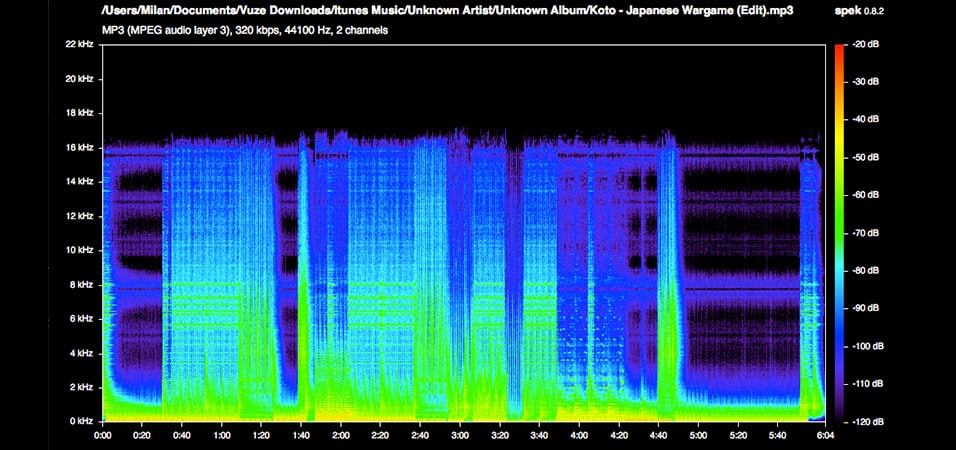
One of the main difficulties for many users may be understanding the differences in music quality. The first thing you should be aware of is that only Spotify and YouTube Music still do not offer a HiFi mode, while the rest of the competition does.
But they do not offer it in the same way either, since we could simplify by saying that there are two types of HiFi quality. One can be considered CD quality, which is 16-bit and 44.1 kHz, and the other is studio quality, which is 24-bit and 192 kHz. In both cases, it is a quality far superior to that offered by non-HiFi services.
To give you an idea, the maximum sound quality of services like Spotify is 320 Kbps, which is the amount of data transmitted per second at that quality. And then, HiFi CD quality is usually 1411 kbps, which makes it superior. Meanwhile, studio-quality goes up to 9216 kbps, being the highest quality that can be offered in music streaming services.
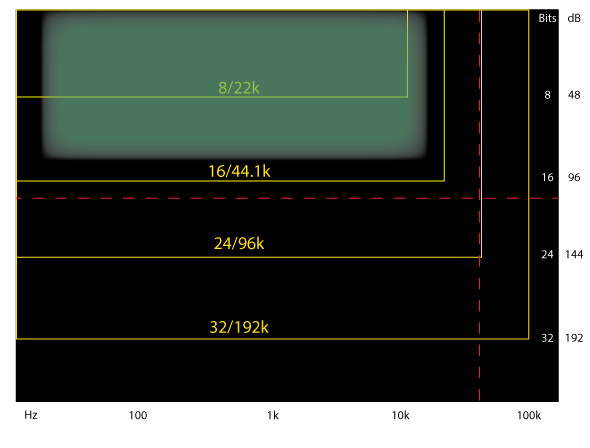
However, beyond the numbers, it is also important to understand that most people will not notice the difference. Firstly, because technologies such as Bluetooth cannot transmit sound at HiFi quality, and secondly, because not even cell phones with headphone jacks usually have a technology that can distinguish this quality. If you have good audio equipment or good speakers that get the music over WiFi instead of Bluetooth you might notice the difference.
A practical example of the drive for numbers versus the ability to enjoy them is in Apple Music. It offers studio-quality in its subscription, but none of its mobiles, speakers, or headphones are capable of reproducing that quality. Even so, the simple fact of offering it already makes its service future-proof, and it is to be expected that in the coming months’ devices capable of reproducing it will arrive.
This is perhaps one of the main strengths of Spotify, that few people will notice that its sound quality is much lower. And even if you can notice that jump with the right equipment and a trained ear, it is still much more difficult to notice the differences between CD and studio HiFi qualities.
This is where individual preferences come into play. If you have a powerful stereo system and you can send the streaming service signal to it via some kind of streamer that connects to the WiFi, then you might be able to tell the difference between the two HiFi. But in most cases, it is usually something more related to perception or the need to have the best quality even if we don’t take advantage of it.
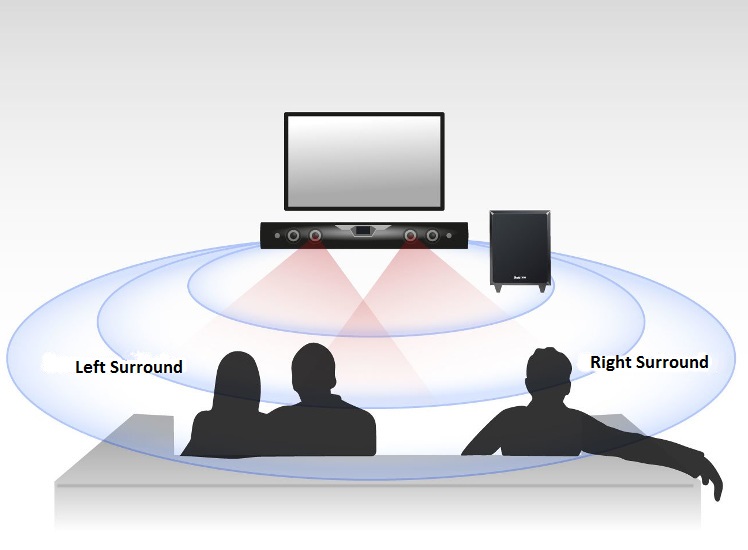
Another thing is surround sound technologies, such as Dolby Atmos, Sony’s 360 Reality Audio, or Apple’s Spatial Audio. If you have compatible headphones or sound equipment, these technologies are very noticeable and allow you to hear the different instruments at different points, as if you were on stage while the music is being played.
Main features of each service
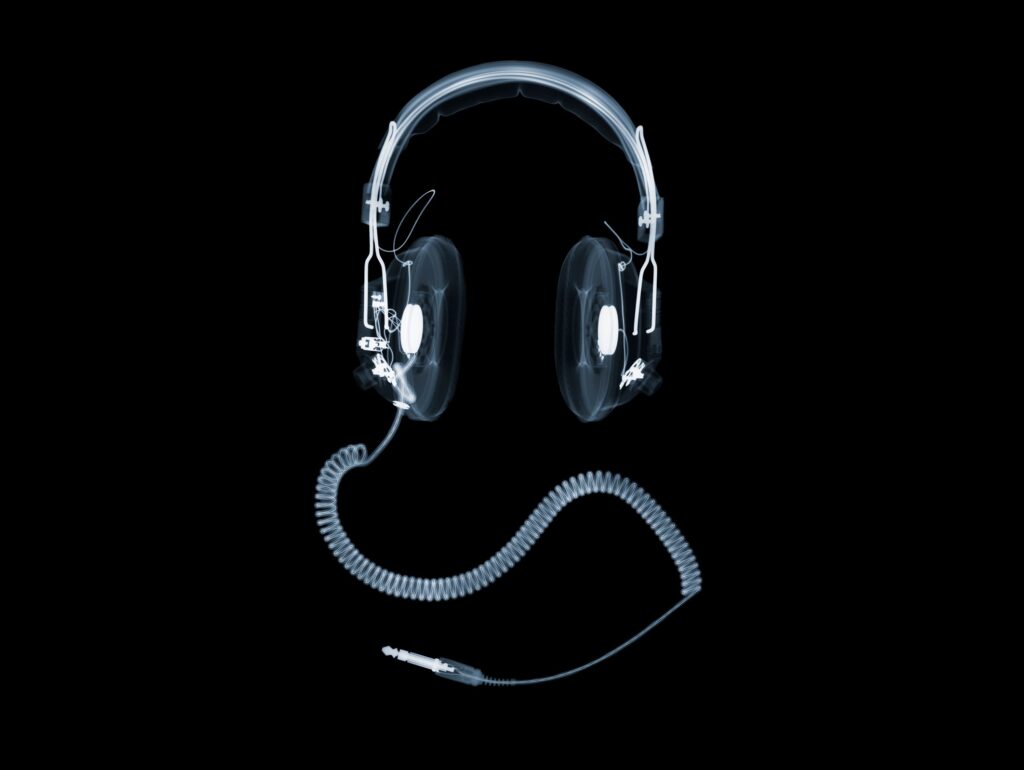
Next, we will explain the main features that you should take into account in each of the services. It is the case that, in the world of music streaming, no two competing services are offering the same thing, and each one has some differentiating features and shortcomings.
This makes the choice more complicated for users, as no service is better in everything, and the choice will depend on the context and how and where you listen to music. If you are looking for an alternative to Spotify with HiFi quality there is bad news, because if the weak point of Spotify is the music quality, the other alternatives also have some flaws.
Amazon Music
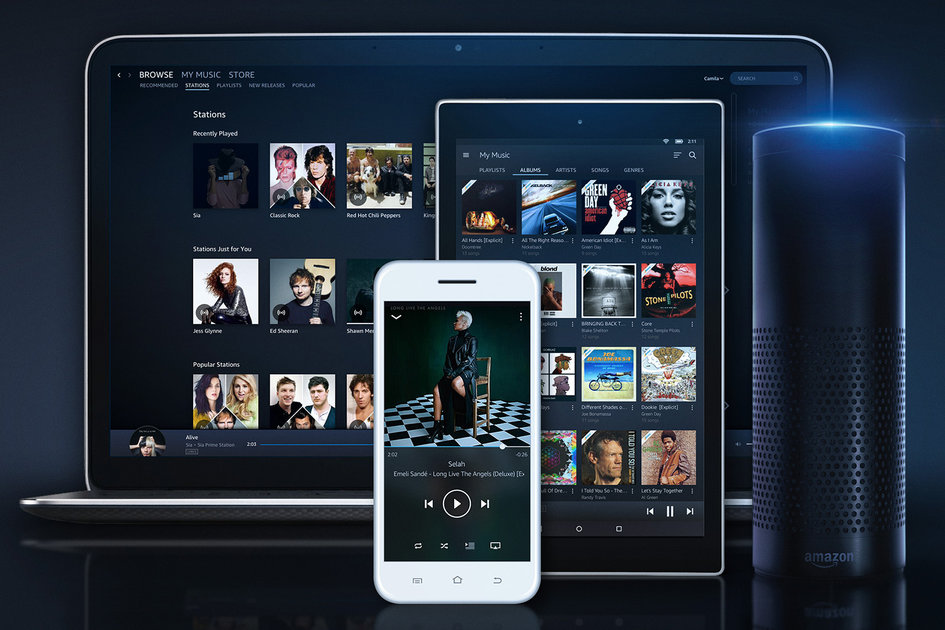
Amazon Music is a good alternative to Spotify, especially for those who are within the Amazon ecosystem. It pays special attention to its compatibility with Echo speakers and has voice control via Alexa. However, it lacks social interactions with friends, nor is it compatible with last.fm’s scrobbling to centralize listening statistics.
In terms of music quality, it is a bit inferior to alternatives such as Apple Music. Its entire catalog is in HiFi CD-quality, while only 7 million of them are also offered in top studio quality. This, therefore, puts it practically on par with Tidal in sound quality, and a little below Apple.
But in its favor, it has applications for Windows, Mac, and mobile, although the truth is that rather than an advantage these apps are a disadvantage. Amazon should work hard on redesigning them. It also has compatibility with a large number of connected devices, especially those that use Alexa, and a web version. It also has personalized playlists, although not at the level of Spotify, and no social features.
Finally, to say that Amazon Music does not have a free trial period. However, if you are an Amazon Prime subscriber you have access to a limited version with a couple of million songs. It’s not much, but it will help you to take a look at what the application offers you. As a tidbit, it has a version only for Echo devices that has a reduced price.
- Main advantages: Good audio quality and very good catalog. Compatible with many devices.
- Main disadvantages: No free trial, music discoveries that could be better, and the applications need an urgent redesign.
Apple Music
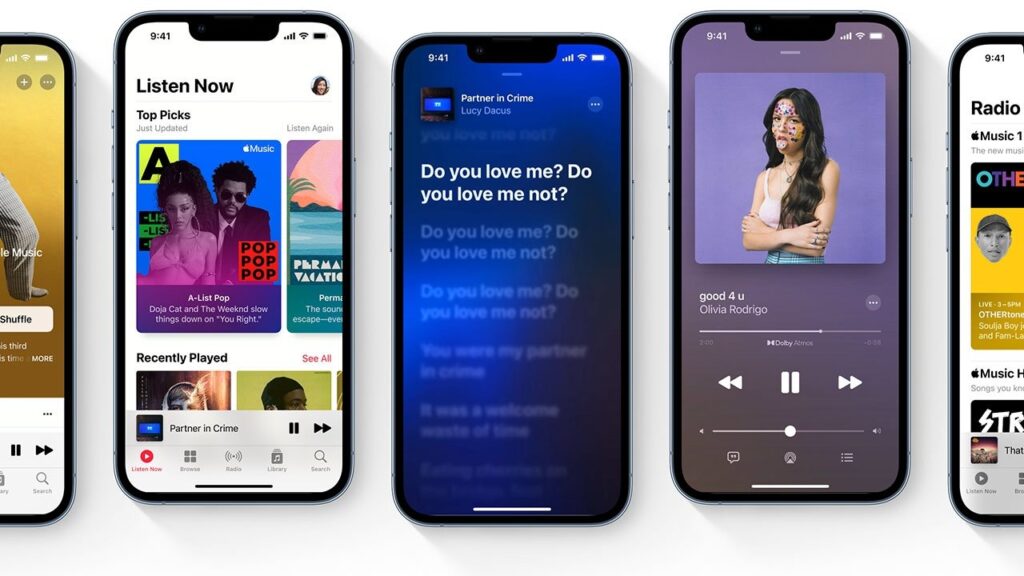
Apple Music is Apple’s service, and as usual in its products, its experience is focused on the ecosystem of Apple products. Android users will be able to use it, although losing features, while users who want to listen to music on Windows will be better off looking elsewhere and to other alternatives.
An Android user could still get to enjoy some sound quality, and also songs in Dolby Atmos. However, you won’t be able to use Apple’s spatial audio, as it’s only available on compatible Apple devices, including AirPods when you use them in the Apple ecosystem. But PC users have it worse, as there is no native Windows application, and they will have to deal with an obsolete iTunes that works very poorly.
But if you are within the Apple ecosystem, it is possibly the best alternative, as you can even follow your contacts to enjoy some social interactions. Scrobbling to last.fm is not supported by default, you’ll need third-party apps, but otherwise, it’s perfect. It also has an excellent catalog that has nothing to envy others.
One of its main attractions is that for its basic price it offers the highest sound quality. No need to pay more for better sound as in other platforms, Apple offers music up to 24 bits and 192 kHz included in its basic subscription. It also implements a system of podcasts and thematic and personalized playlists that, without being at the height of Spotify, are pretty good.
In short, Apple has in its hands a product that could be perfect if it were not for its limited support and for being focused on its ecosystem. It also has a cheaper annual plan and a family plan that works through the Apple family. It integrates with Siri for voice control and includes live radio stations.
- Main advantages: Good audio quality and very good catalog. Good playlists and HiFi without paying more.
- Main disadvantages: It focuses on the Apple ecosystem, if you use Android you have limitations, and if you use Windows better forget about it.
Deezer
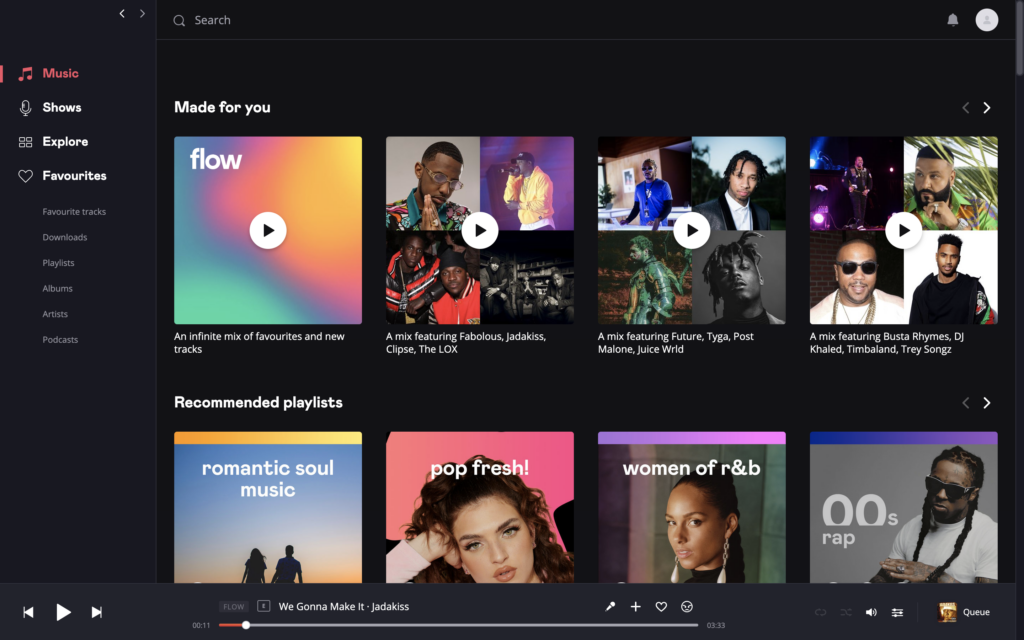
Deezer is possibly the most veteran streaming service, although today it has fallen a little behind. Its basic subscription is the one with the lowest sound quality next to Spotify, just 320 kbps, while its HiFi subscription for $10.99 only has up to CD quality, falling far short of the studio-quality offered by almost all alternatives for that price.
This makes it very difficult for Deezer in all fields since AAC quality is at the same level as Spotify, but without all its social interactions and its user base, while the other alternatives have better HiFi quality. One of its assets is the 360 Reality Audio sound, just like Tidal or Amazon. They were the first to offer this surround sound technology, but they are no longer the only ones.
There are also some positive aspects, such as Deezer has a free mode in case you want to try it first, and it has personalized playlists and a large number of applications for various types of devices. You also can move sound from one device to another like Spotify, and it supports last.fm scrobbling.
It also has a solid catalog of songs so that the catalog is not a problem against its rivals. Plus, you have podcasts and other types of additional audio content. It can be interesting if you are looking for unusual alternatives. However, it lacks social interactions.
- Main advantages: A solid catalog, podcast system, and 360-degree audio.
- Main disadvantages: No studio HiFi quality, only CD quality, and almost all alternatives offer more for the same price.
Qobuz
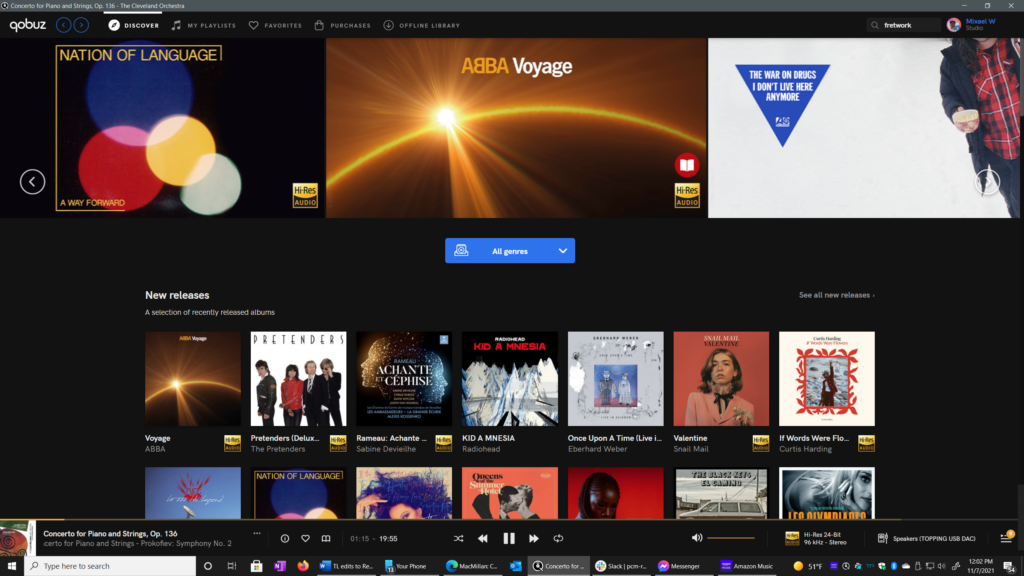
We could refer to this alternative as Spotify for audiophiles and music lovers, as it focuses on sound quality. Its “bad” music quality is CD quality HiFi, the 16 bit and 44.1kHz, but its big bet is on studio-quality music, for which it has one of the largest catalogs among the competition. Qobuz is a small French company, whose strategy is to have a different strategy from the big corporations.
We could describe the Qobuz experience as going to a record store. There are no algorithms or suggestions, and no social features like Spotify, the music may seem a bit cluttered, but its focus is on sound quality. It gives you a little something extra in the form of articles and features that dig deeper into the artists. It supports scrobbling with last.fm, which also helps you have a place to see your stats and get the recommendations that the service doesn’t give you.
The people behind this service have said that they will never be the first with options, as they are a very small team. However, on their roadmap is to improve their system to connect with other devices (although currently, you can send music to Chromecast, Google Home, and Sonos devices. They are also working on implementing Sony’s 360 sound. It has apps for Android, iOS, Windows, and macOS, though you can’t yet control playback from one device to another.
In terms of subscription modes, it has two rates. The basic one includes everything for about $12.99 per month including studio-quality music, staying on par with Tidal. However, for one and a half dollars more you have another tariff that includes discounts of up to 60% on digital music purchases. These rates go down a bit if you subscribe for a whole year, and you also have Duo and family plans.
Its two most differentiating features are that you have the option to buy DRM-free digital music to continue listening to it even if you cancel the subscription and that you can choose which genres you get suggestions for on the cover. These suggestions are not algorithmic, just like your personalized playlist, but are hand-picked by humans.
- Main advantages: Gigantic music library in top quality, excellent sound in its applications, HiFi in its mobile apps, does not suggest artists and genres you are not interested in.
- Main disadvantages: Higher price than many competitors, no algorithms for personalized recommendations, no social interactions.
Tidal
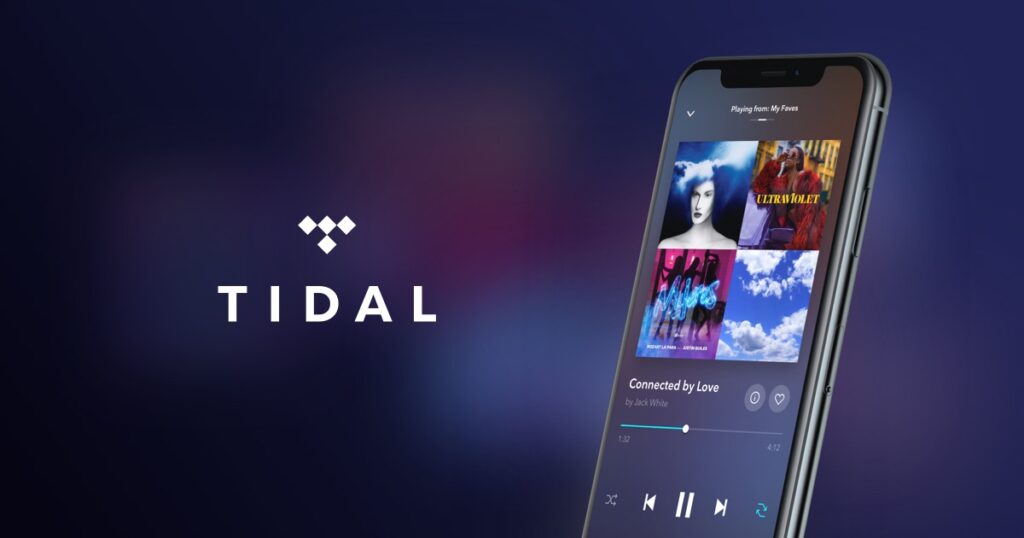
Tidal is a streaming service created and maintained by a group of musicians so that creators can earn more money for their reproductions. For the same price as Spotify, it offers you a HiFi with CD quality, and for $19.99 a month, the ante is upped to studio master quality. The bad thing is that there are already some alternatives that offer this studio quality for the price that Tidal asks for CD quality.
The studio-quality music, which they call Master, uses an MQA codec that allows for greater efficiency in getting the music to you. It takes up less space. Although there are some complaints that it is a codec that loses some quality, it is a little noticeable difference. But you may hear some complaints about it in specialized forums, using Qobuz as an example of how to do it better.
However, for price and for being compatible with many devices through Tidal Connect is possibly the most solid rival to Spotify, although it lacks all the social features and Alexa compatibility has not yet left the United States. It also doesn’t have a basic like being able to toggle between PC and mobile as devices where the music plays. But you will also find Dolby Atmos and Sony 360 Audio sound, as well as support for last.fm scrobbling.
Tidal implements a system of personalized lists that are updated daily, as well as thematic playlists with very good content. It lacks all Spotify user-created playlists, and there are very few Spotify “This Is” style artist playlists. What it does have is a system of listening statistics where every month you can see the artists you listen to the most, and if you use the most expensive plan you also have a clear conscience that a small percentage of what you pay goes directly to your most listened artists.
Possibly the big difference with other plans is that Tidal implements a video service with video clips and reports instead of the podcasts that other platforms have preferred to include. It also has a credit system to know about an artist not only his songs but also the songs he has composed for others or the albums he has produced.
- Main advantages: A solid catalog, video clips, good interface, and good sound quality.
- Main disadvantages: Amazon and Apple offer the same quality for a little less, and it lacks social features.
Spotify
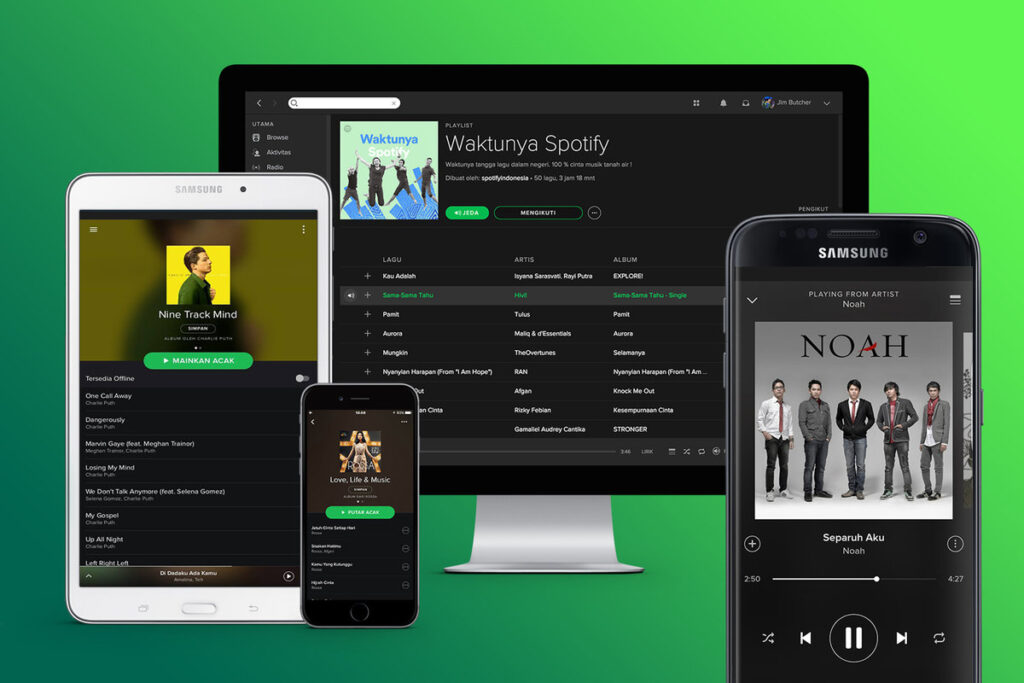
We could consider Spotify as the service with the most options and features, especially if you want to interact with your friends and listen to music on a larger number of devices. You’ll be able to listen to Spotify on virtually any smart device you have, you’ll be able to connect with friends to see what they are listening to at all times. It also supports Scrobbling on Last.fm to centralize your listening stats.
In a way, these are some of the things that make Spotify still the industry standard, the great rival to beat even though it is one of the worst sound quality offered. For the same price, some alternatives have better audio quality, but they lack social interactions and the ability to be used on as many devices as Spotify.
The service has also become one of the big names when it comes to listening to podcasts, and its recommendations are many and varied. It has a very well-tuned system for recognizing your tastes, and unless you listen to an artist who has a mixed record with another artist who plays another genre of music, you won’t find songs you don’t like in their recommendations.
In addition to this, there are a huge amount of playlists, some created by Spotify and others made by users. They also have the This Is lists, with a compilation of many, many artists that can help you with those new musical discoveries you want to delve into.
Spotify offers a free plan with ads, as well as a two-person and a family subscription, so you have plenty of alternatives for every situation. It’s easy to use, although it has had problems for not stopping podcasts that spread lies and misinformation, and is one of the worst payers of artists.
- Main advantages: Lots of music discovery options, easy and intuitive interface, compatible with almost any device, and social options.
- Main disadvantages: Poorer sound quality and there are alternatives with better audio quality for the same price.
YouTube Music
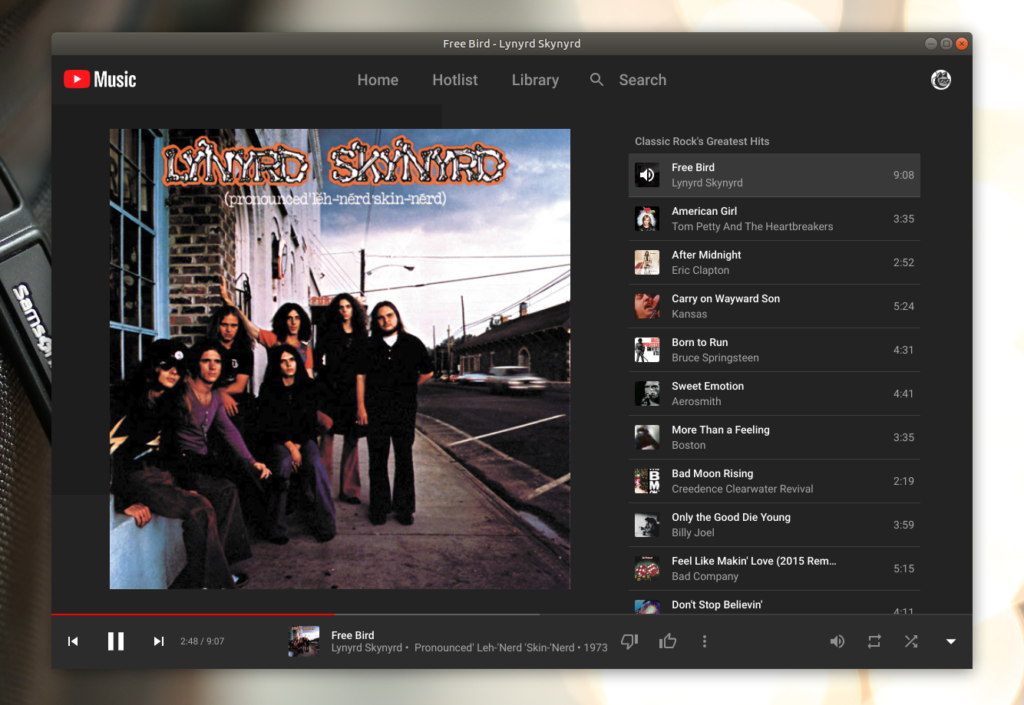
Google has been trying for years to design a good formula to compete in music streaming, and although YouTube Music lags in music quality, it has some features that may interest you. The biggest advantage you have if you are within the Google ecosystem since you can use it on any device that has Google Assistant.
In addition, YouTube Music has an excellent search engine, a large number of playlists created by users, and all YouTube videos. Thanks to embedding videos, you can also listen to them as if they were music, giving you access to a lot of rarities and live recordings. In addition, it has a free version with ads to use at specific times.
But the big downside is the music quality. It is quite inferior to any competitor, even Spotify. It also has no native support for last.fm scrobbling, no social features and no attractive appearance compared to the competition. And the worst thing is that at the moment it does not seem that Google is interested in improving the service.
- Main advantages: Very good search engine, free version, lots of rarities, remixes, and home recordings.
- Main disadvantages: Low-quality audio with no details and overly compressed streams. Music discovery system rather disappointing, and a catalog that could be improved.
What are the best alternatives?
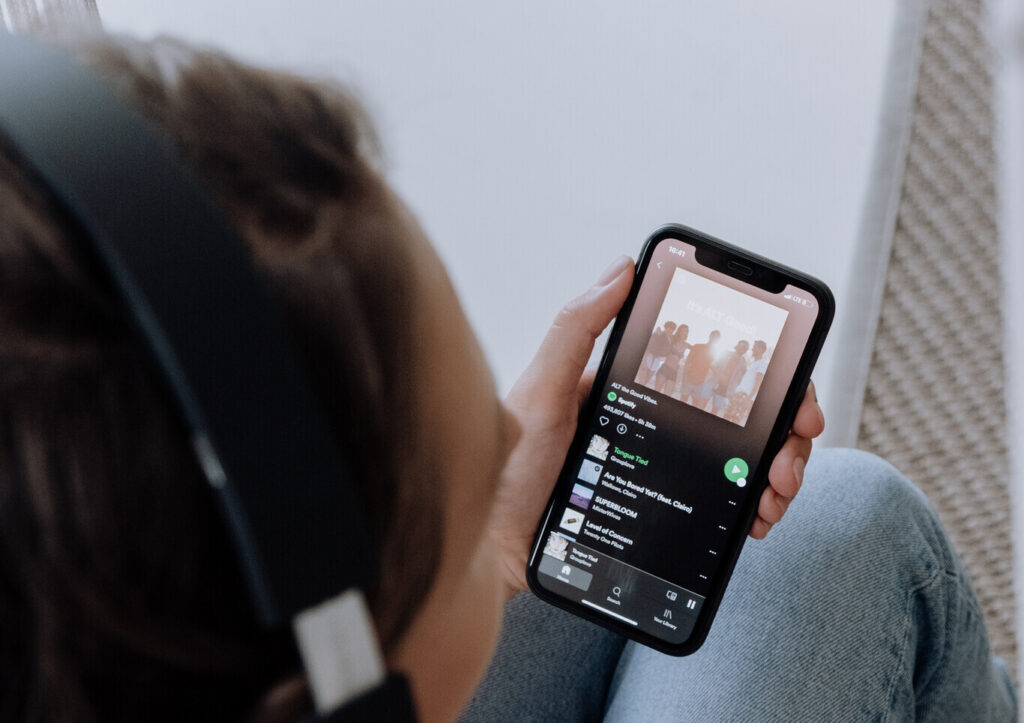
If you want a music service full of options and social interactions such as seeing what your friends are listening to, Spotify still has no powerful rival in these aspects. It is true that in sound quality it is at the bottom, but in everything else, it is still at the top. All other rivals always seem to be missing something, some small or not so small detail that prevents them from being up to par.
On the other hand, if you want sound quality the best alternative is Qobuz. Their offer is opposite to Spotify’s, as there are no customization algorithms, very few custom playlists, and the ones that there are handmade and not by automation or algorithms. They are such opposites that, if you wanted to have a subscription to two services, they could almost even get along.
If you want something in between, Amazon Music and Apple Music are the strongest bets for music quality at a low price. But Apple mistreats the compatibility of operating systems that aren’t theirs, and Amazon would have to completely redesign their apps to keep up with their competitors. Moreover, these companies don’t even have products of their own with which to leverage the audio quality they offer, although this can always change in the coming months.
Tidal is possibly one of the most versatile rivals to Spotify, but it lacks all the social interactions and still lacks basics such as being able to send sound from PC to mobile and vice versa, control playback from any device or bring Alexa compatibility to Spain. In addition, its studio sound quality has become expensive after Amazon and Apple have lowered their prices, and if I’m honest, there is something wrong with its sound compression, and it doesn’t sound that good.
In short, Spotify’s great rival could be in any of these three platforms mentioned so far, it is only necessary for one of them to make a move. Will Apple improve the functions of its apps outside its ecosystem? Will Amazon improve its sound and its apps? Will Tidal match the price of the previous two and improve the control of music? We will have to see what happens first, whether these services move or Spotify manages to match their music quality.
Then we have Deezer, which is slowly falling behind in sound quality as it still does not go beyond HiFi with CD quality. Simply put, every other platform matches or improves its offering, and it doesn’t have a great feature that makes it stand out above the rest.
And finally, we have YouTube Music, with which Google seems to want to have a position in the market but does not take risks or try to be competitive with other alternatives. Of all the services mentioned in this comparison is the one with the worst sound quality by far, although if this does not matter to you if you just want the best integration with the Google Assistant or you are satisfied with its free mode, then you may be interested.
So which one should you choose? If you are an Apple device-only user the answer is simple, Apple Music. Spotify is still the most versatile alternative on the market, and your safe choice unless you’re too concerned about sound quality. Tidal aims to be similar but with better quality, and Qobuz is ideal for audiophiles. Amazon Music may interest you if you have a large ecosystem of Echo devices.
This post may contain affiliate links, which means that I may receive a commission if you make a purchase using these links. As an Amazon Associate, I earn from qualifying purchases.

